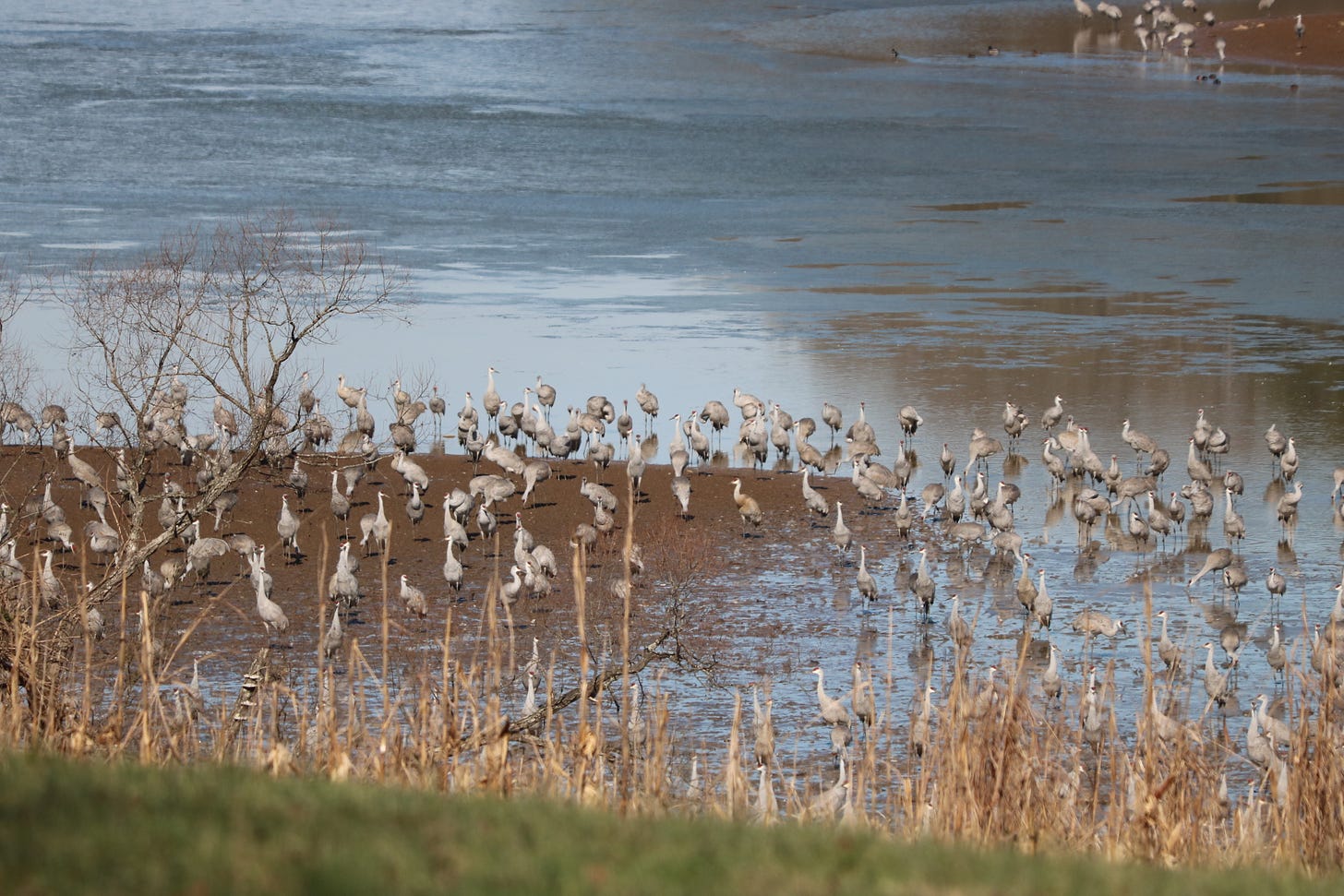The Birds of Heaven: A Review
Sandhill Cranes at Hiwassee Island: Photo by Ray Zimmerman.
“One way to grasp the main perspectives of environment and biodiversity is to understand the origins and precious nature of a single living form, a single manifestation of the miracle of existence; if one has truly understood a crane--or a leaf or a cloud or a frog—one has understood everything. In the growing scarcity of good water and the impending competition for this resource—which may well become the greatest for all life on earth in the new millennium—the plight of Homo [sapiens] may not differ very much from that of Grus.” – From the introduction.
This book was another triumph for Peter Matthiessen, a founder of the Paris Review and author of numerous natural history books. Matthiessen described the life history, geographic distribution, and survival potential of each of the fifteen species of cranes, eleven of which were then classified as endangered.
Many of us have heard less knowledgeable people identify Great Blue Herons as cranes, but Matthiessen points out that this common misidentification in modern-day America is familiar. Linnaeus named the Eurasian, or common crane, “Ardea grus,” or Crane Heron, in the nineteenth century. Audubon portrayed a Heron as the “little blue crane.”
Matthiessen stated that Siberian natives call the lesser Sandhill Crane “the crane from the east,” although we in North America regard it as a western subspecies. Reading this book, we also hear of the “Accidental Paradise,” Matthiessen’s term for the Korean Demilitarized Zone, which has become a refuge for the Red-crowned Crane, the Hooded Crane, and the White-naped Crane.
An entire chapter was dedicated to Australia, home of the Brolga and a subspecies of Saurus Crane. Another chapter is devoted to the island of Hokkaido, home of the Red-crowned Crane and indigenous people known as the Ainu. He spoke of clearcut forests and drained swamps resulting from post-World War II development.
Matthiessen (born 1927) has encountered each of the fifteen species of cranes in his worldwide travels. I would place this book in a class with The Snow Leopard, for which he won the National Book Award. Matthiessen died in New York in 2014.
An earlier version of this review appeared in The Chattanooga Chat, the newsletter of the Chattanooga Chapter of the Tennessee Ornithological Society.




